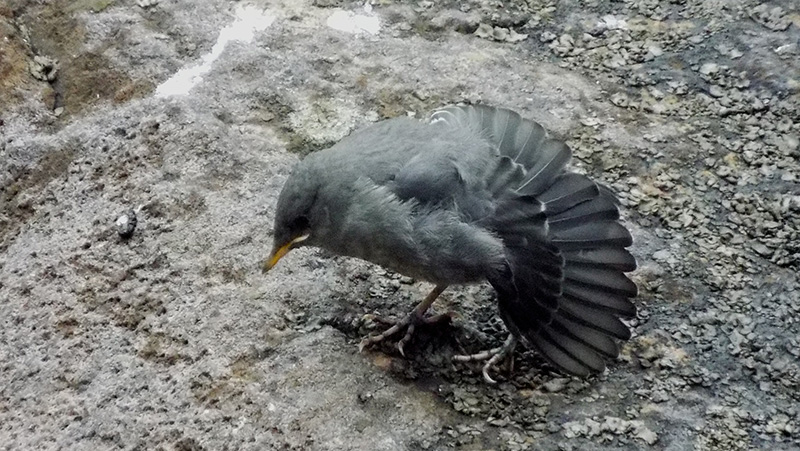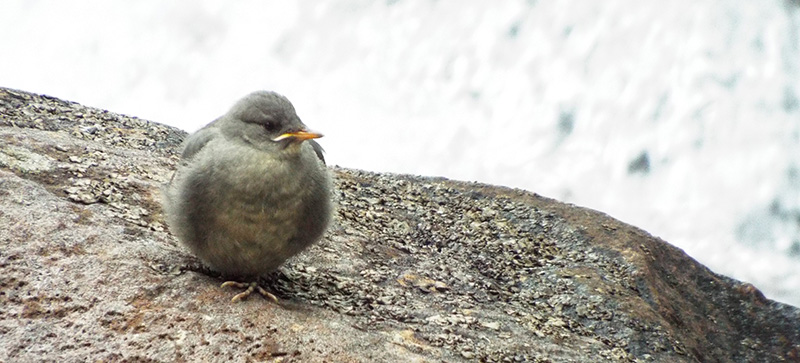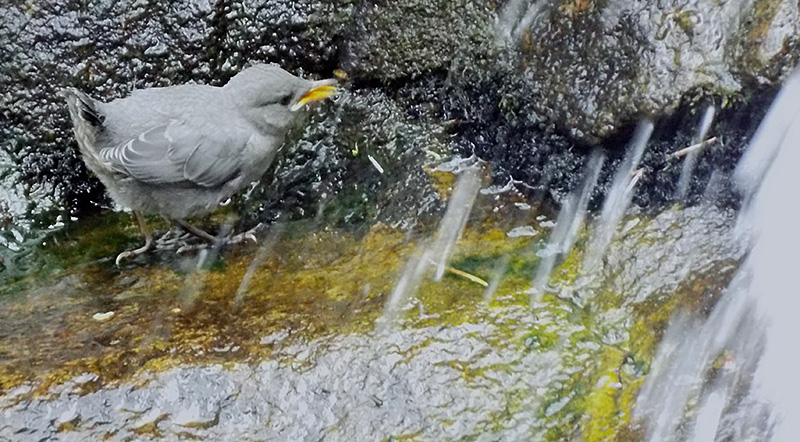
This post was written by Erv Nichols, Birding Intern in 2014, 2015, & 2016.
“Cranial kinesis.” It’s a great term to throw around at your next cocktail party.

Not as complicated as it sounds, it’s something most birds possess. It means the upper bill is hinged to the skull, allowing the bird to open and close its jaws more rapidly than would be possible if only the lower jaw moved. When both jaws open the bird can aim without changing the orientation of its head helping it to capture fast moving bugs and small fish. Our subject, a newly fledged American Dipper chick, does just this. I know because I followed it with my camera for hours and got to see it for myself.
Now, I knew from days of observing s/he that it was close to leaving its well hidden nest behind the waterfall and strike out on its own, but I didn’t expect to see its first foray into the rushing waters of Lee Vining Creek. At first I thought it was just another day of watching and waiting for mom to appear with a tasty bug or minnow and the chick to flap and squawk loudly until she stuffed it into the gaping maw of a mouth. That is in fact what happened three or four times, each spaced further apart until after about half an hour passed and no one came back. The chick then went into panic mode for a few minutes, squawking and flapping more than ever and finally settling down with, I swear, the sulking look of a young child sent to its room.

After another hundred frames snapped and twenty minutes passing, it stopped looking for mom and began investigating its surroundings, pecking at pebbles and bits of mud. Eventually it found its way to the edge of the rushing stream and a light lit up like “Oh yeah! This is where I belong!”

A few false starts and it disappeared into the current.
Now, I may be anthropomorphizing, but I bet mom and dad were watching from a distance and cheering or breathing a sigh of relief. I left sore from rock sitting, wet from the spray, and red eyed from staring through the viewfinder but for me, it was a great Mono Basin birding adventure, and one I won’t soon forget.

Your detailed account confirms, or at least corresponds to, my interpretation of interactions between a parent/juvenile pair of Dippers on the banks & rocks of Breitenbush River in Oregon’s Western Cascades 2 weeks ago. I observed that the length of time between parent-feeding-young contact was increasing, until the “abandoned” juvenile stopped waiting around, stopped its squawking, and went foraging on its own. I don’t know if I witnessed the first occurrence of this independent feeding, but it was a treat: I was surprised and delighted to watch the fledgling fend for itself!